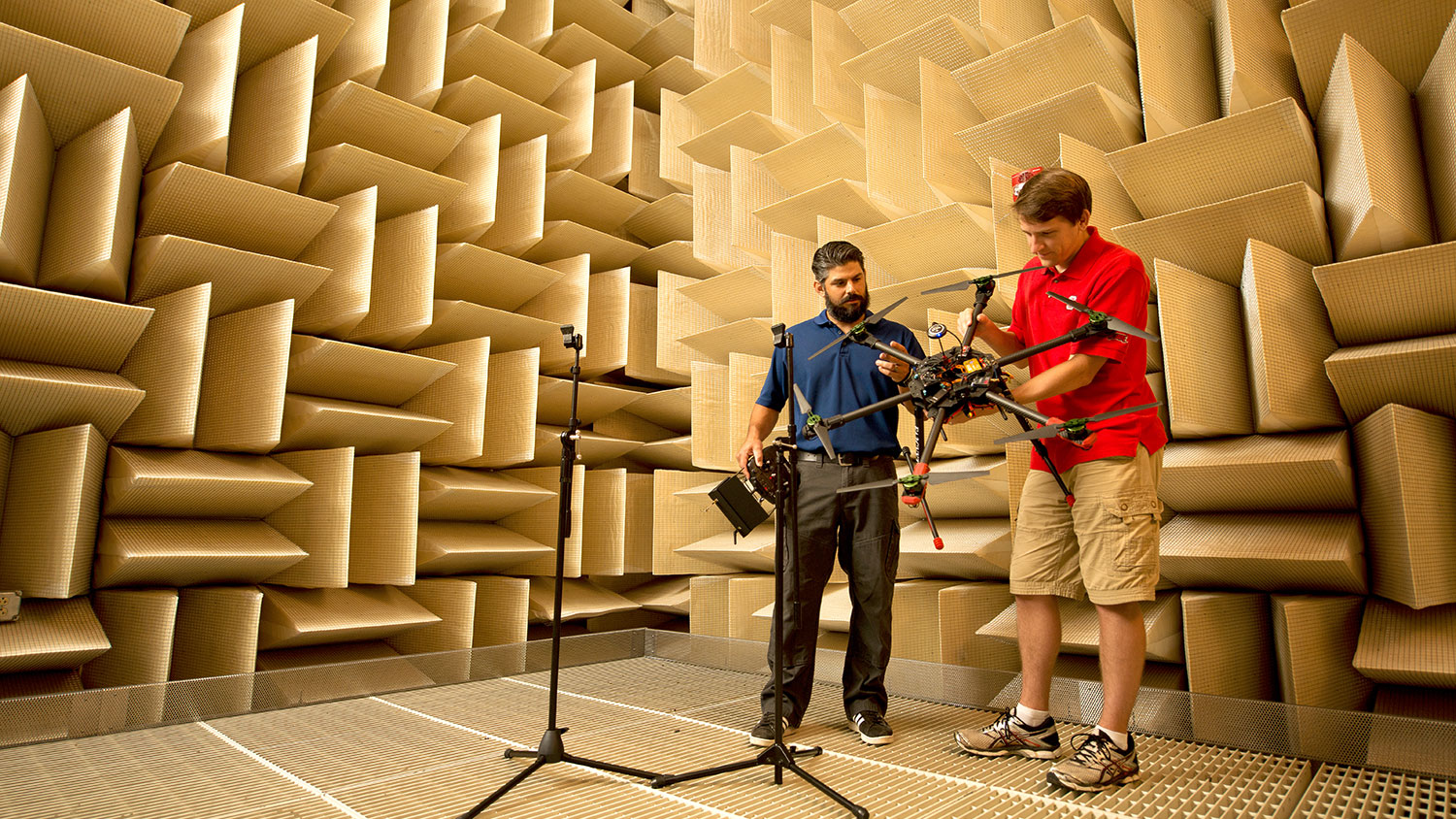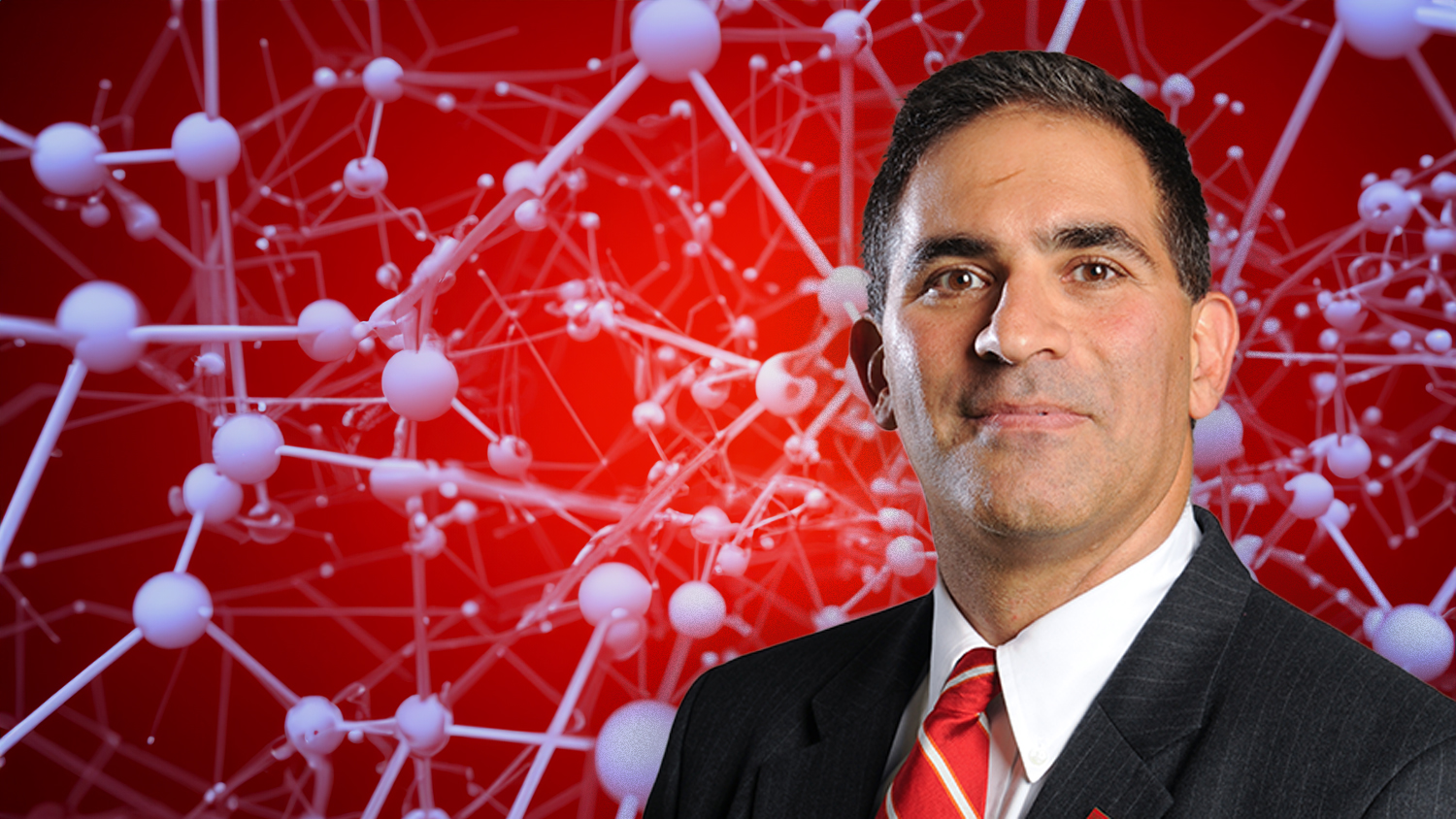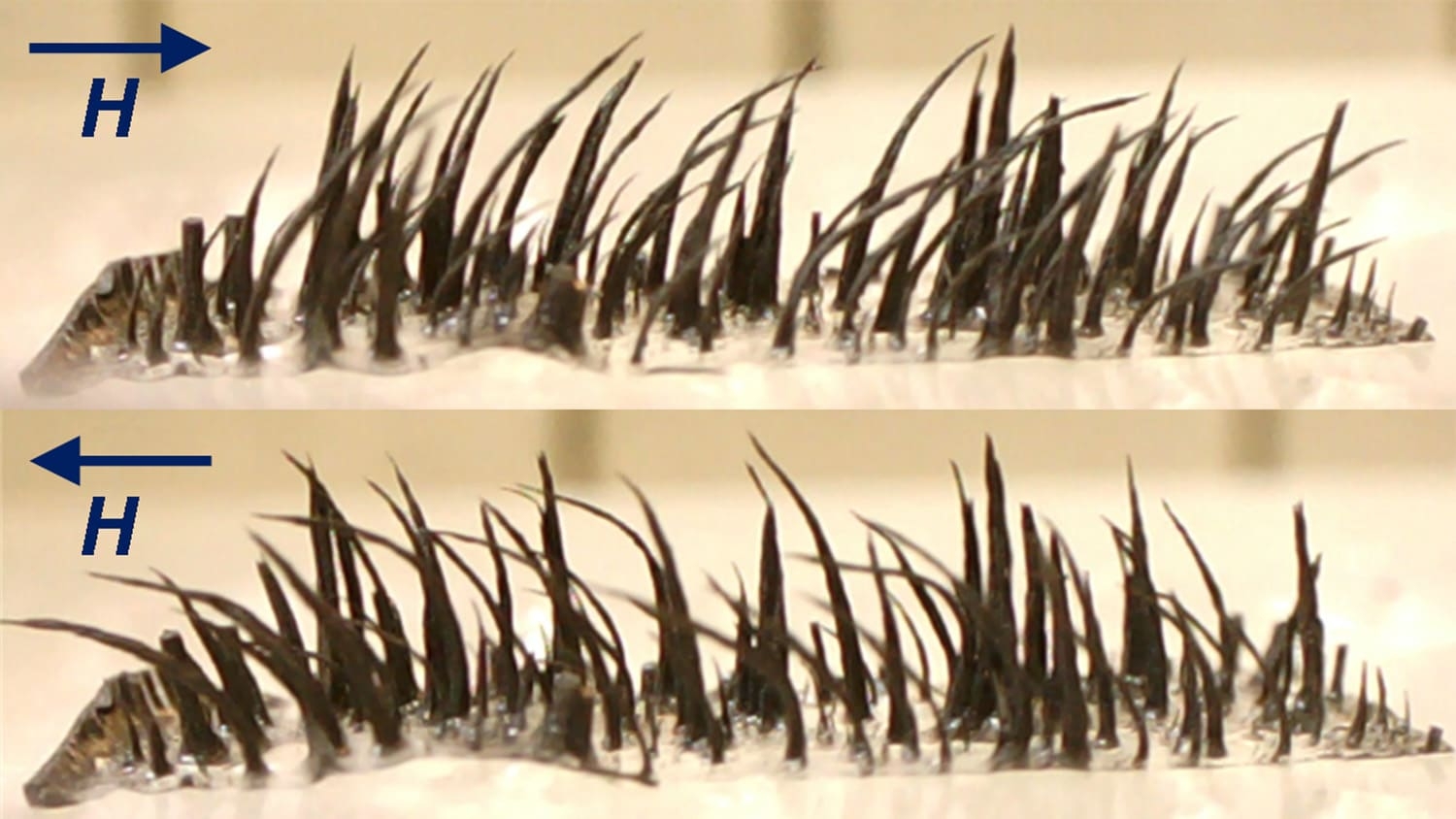In our labs

Sound and Vibration Lab
Department of Mechanical and Aerospace Engineering (MAE)
This anechoic chamber mimics an infinite space by absorbing acoustic and electromagnetic waves, providing a perfect environment to test those waves without reflectivity affecting the measurements being taken.
The walls of the chamber, located in an annex building behind Engineering Building III on NC State’s Centennial Campus, are lined with foam wedges backed by fiberglass. The wedges line the chamber from floor to ceiling, with a metal grate over the floor to allow walking. A wire cage that covers the panels makes the chamber a Faraday cage, which blocks outside electric fields and prevents radio frequency interference from affecting the measurements being taken inside.
A mechanism on the door ensures that you can’t accidentally lock yourself inside, since no one would be able to hear you yell and your cell phone wouldn’t be able to make a call.
The noise level in the chamber is in the range of 15 to 18 decibels (the average conversation is 50 to 60 decibels), so quiet that it takes a little getting used to.
“It’s a little bit of a sensory deprivation experience,” said Dr. Richard Keltie, professor in MAE.
For that reason, Keltie does not recommend closing the chamber door and turning out the lights.
MAE spent $250,000 to construct the facility on Centennial Campus after utilizing a similar chamber beginning in the 1960s in Broughton Hall on North Campus.
Keltie used that chamber to test underwater acoustic sensors for the U.S. Navy. The College of Textiles tested looms and other heavy machinery in that chamber to determine why they are so noisy and how to make them quieter.
Recent clients for the new anechoic chamber have included a company developing low-noise refrigeration systems for medical applications and wine chillers. The company needed a low-noise environment to test the acoustic pattern coming from the equipment, and MAE offers the only one in the area.
Dr. Yun Jing, an assistant professor in MAE, specializes in acoustics and is an adjunct professor in the UNC/NC State Joint Department of Biomedical Engineering.
He has used the chamber for several research projects, most recently to study the manipulation of acoustic waves from a speaker as they pass through a passive array made of 3D printed metamaterials. Manipulation of the waves using this material can generate different holographic images on the imaging plane without the need for complex and expensive circuitry and active phased arrays. Jing, who came to NC State in 2011 after a postdoctoral fellowship at the Harvard Medical School, said he would not have been able to accept a teaching position at an engineering school that did not have access to an anechoic chamber.
The MAE department partners with private industry to develop small class autonomous aerial vehicles for military use.
These vehicles, commonly referred to as drones, have a tremendous electromagnetic and acoustic signature, said Dr. Larry Silverberg, professor and director of undergraduate programs in MAE.
Testing the acoustic and electromagnetic signature of these vehicles in the anechoic chamber informs work on reducing both so that they are harder to hear and pick up on radar.
Return to contents or download the Fall/Winter 2016 NC State Engineering magazine (PDF, 3MB).
- Categories:


